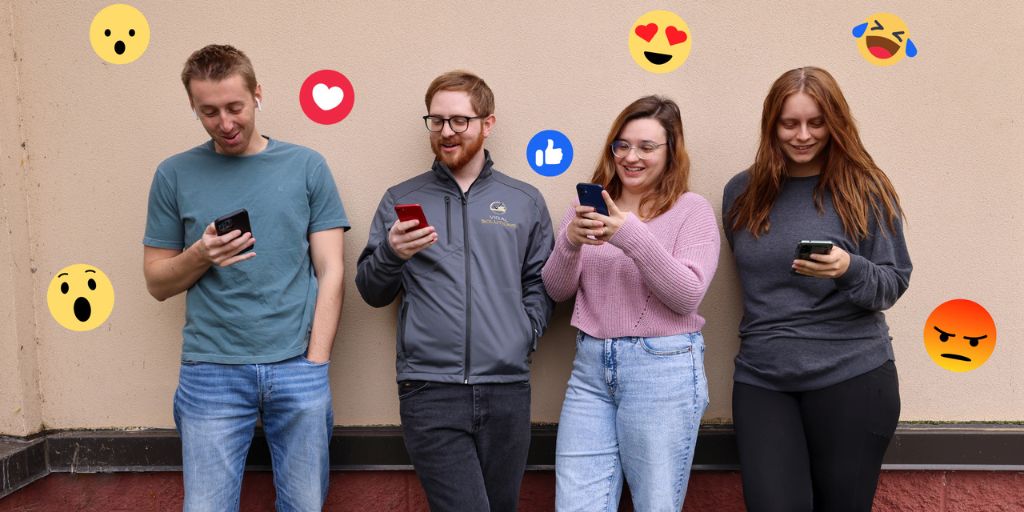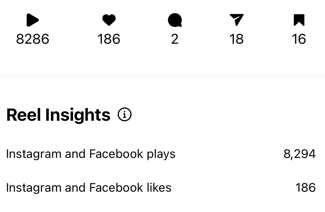
Social Media Algorithms – Part 1: How Do They Work?
If you are creating stellar posts, but they aren't reaching your followers, it may be that social media algorithms aren't helping you get your posts where they need to be. That's because while social media platforms use algorithms to find the best and most relevant posts for users, your reach and engagement will suffer if they aren't sending out the right signals to pick up on.
It's essential to understand how social media algorithms work so you can ensure your posts aren't going to be unnecessarily railroaded and your audience will get to enjoy them.
If you find the idea of understanding algorithms intimidating, you aren't alone. Let's face it. Even the word algorithms is enough to make most people switch off.
But don't worry… You just need to know how these algorithms can help you learn how to create compelling posts that resonate with your audience. After all, data analysis is an essential skill for social media success.
This first blog of our 2-part series explores how social algorithms work. In the 2nd installment, we will discuss how to apply them for greater social post reach.
What Are Social Media Algorithms and What Do They Do?

Social media algorithms are complex mathematical equations that sites use to rank posts in an order that shows users the most appealing content first. Algorithms do this to find the posts that best match each user's browsing habits.
Without these algorithms, posts would appear on users' feeds in chronological order. The problem for businesses is a deluge of irrelevant posts would quickly bury the most interesting content for their audiences.
Providing compelling content also helps platforms boost ad revenues by maximizing the number of active users.
How Do Social Media Algorithms Work?
The leading social media platforms use similar algorithms, and they are all based on users' viewing choices and also engagements, searches, and even Siri results. The algorithms constantly change as they adapt to each account holder.
For example, if you are only watching and engaging with accounts that share Justin Bieber's images, your feed will have suggested posts/tweets/videos on Justin Bieber.

Now, if you suddenly stop and start engaging with posts about hockey, your feed will evolve and change to show less Justin Bieber and more about hockey.
While social media channels update their algorithms to improve their performance and enhance the user experience, the main driver for change is individual account holders' changing interests and tastes.
Here are some examples of how social media uses algorithms:
- Ads or sponsored posts that target your shopping and buying habits
- Friend suggestions based on your contacts, connections with similar accounts, and location
- Search engines results that give priority to your keyword search and viewing history
- Post suggestions that base recommendations not only on similar posts you have viewed and engaged with in the past but also on what other people with similar tastes have chosen
What Factors Do Algorithms Take into Account When Ranking Your Post?
Social media algorithms use artificial intelligence to learn your preferences from your browsing habits. It doesn't take long for the algorithms to start recommending posts.
Just look at a few Reels on Instagram or videos on YouTube, and the algorithm will start to suggest content similar to those you chose to view.
So, what do algorithms look at? Here are some of the most important factors that algorithms use to choose relevant posts for you.
Information about the Post
Information about the post informs algorithms of the type of content and its significance to users.
- Popularity: Popular posts that get the most views and reactions from viewers will tend to get a high priority on your feed.
- Interaction: How other users interact with the post, including engagement insights, is a crucial factor.
- Time and Location: When and where the post was made plays a role.
- Media Type: Social media algorithms prioritize media types to recommend to you, depending on how much you engage with long and short-format videos, images, slideshows, graphics, and text-based posts.
Engagement Insights
Engagement insights are your and other users' activities that help algorithms decide if you will be interested in seeing a particular post or something else on the topic. Some of the most significant engagement insights come from…
- Time spent reading or viewing a post
- Profiles you follow
- Posts you like or comment on
- Clicking a link or CTA to learn more on a topic or check out a product or service
- Sharing posts with others
- Clicking on an account to find out more about the creator
- Following a hashtag

Relevancy
Algorithms recommend the most relevant content to you based on what they learn about your browsing habits, including:
- What you search for
- The content you engage with most
- The type of media you tend to view
- Your buying habits
- How much time do you spend reading or watching individual posts
Recency
These algorithms take into account when posts were made, prioritizing more recent content.
Quality and Reliability
Algorithms rank high-quality posts further up the feed and suppress those that spread misinformation or present duplicate content.
Social media companies are under pressure to eradicate fake news, bullying, and spam. They now put a greater value on reliable information on their feeds. Authenticity is also a critical factor when it comes to improving engagement.
Creators' Followers and Activity
The number of users you attract and the extent to which those followers or other users engage with your posts will influence how high your posts rank in users' feeds.
Relationships
Algorithms consider your connections and how much you interact with other users. If the user follows you and interacts with you regularly, the algorithm is more likely to recommend your new material to them. Contacts are also the basis for recommending new friends and connections.

Why Is Understanding How Social Media Algorithms Work Important?
Simply put, you need to understand social media algorithms because you want your audience to see and engage with your posts! If you don't know how algorithms work, you won't have any influence over whether people will see and engage with your content.
Of course, your primary goal should be to provide exceptional content that is both entertaining and informative and that your audience will love.
If you only create content to chase likes or shares, your efforts are doomed to fail.
Here's why…
- Your content will tend to be unfocused.
- You won't appeal to a target audience, meaning you'll have fewer followers.
- Your content will come across as spam and clickbait.
So, you need to understand what your audience wants. That means asking questions like the following:
- Will your audience gain value or insight from this content?
- Why did this post receive low engagement?
- Did your audience resonate with or relate to it?
- Did they learn something new?
The most important factor to consider when creating content is to create content your audience wants. Creating content with value will also make it shareable and be more favorable within the algorithms.
How Do Social Media Platforms Use Algorithms?
Social media sites use algorithms that are effective at providing the type of media format that successfully reaches and engages their target audience.
Chances are your business has a presence on more than one social platform. So, you should have a basic understanding of what the most popular ones look at.
YouTube
YouTube's algorithms are designed to recommend videos on its home page based on what you have watched before, with some top trending videos thrown in. If someone watches videos like yours, there's a great chance your video will be recommended to them.
YouTube has also designed its algorithms to keep viewers watching videos on its site for as long as possible. Therefore, making appealing recommendations is central to its success.
The platform describes its algorithm as a “feedback loop in real-time” that suggests videos to viewers based on individual preferences.
YouTube continually updates its list of suggestions based on the videos the viewer most recently watched and the interests gleaned from their viewing history. Its algorithms focus on three main areas to create suggestions that make viewers feel compelled to click on the next video.
- Viewer Preferences: Viewing history, browsing habits, and engagement
- Popularity: How the video performs based on viewers' interest, how long they watch it, and how they rate it
- Other factors: Signals such as viewers' interests and the competition
TikTok
Most social media algorithms favor content and posts that have been built or followed. TikTok is a little more democratic. As TikTok was designed primarily for entertainment, posts are more likely to get a look in if posted by newcomers.
TikTok's feed algorithm doesn't consider the user following to rank posts, unlike other social media sites. Nor does it put so much importance on quality indicators, such as originality, as other sites. So, it's great if you are a smaller account that wants to get established. It also is geared toward providing unique feeds tailored to individual preferences.
- Viewing History: TikTok suggests videos based on the videos you watch and where they come from. It is particularly good at identifying niche communities you frequent.
- User Interactions: This is based on what content options you interact with on your app and the Discover tab for searching and exploring categories such as videos, LIVE, hashtags, or sounds.
- Account Preferences: TikTok also optimizes content based on user preference settings, including interests, language, country, etc.
Facebook says its algorithms base recommendations on many factors:
- Who interacted with the content, including if they were in the same Group or Page
- Related topics users recently engaged with
- User location
Over the last few years, Facebook has been emphasizing genuine interactions, which hold viewers' attention for longer, and those that are exchanged between close friends.
Instagram's algorithms are based on several factors, including the following:
- User activity
- User connections
- Information about the post
- Information about the account
Instagram has recently focused more on original content than reposted and shared posts.
Takeaway
Understanding social media algorithms is critical to increasing the reach and engagement of your posts. But you'd have to be a computer scientist specializing in algorithms to understand the nuts and bolts of how they work.
Don't let that discourage you from trying to understand how they affect your posts, though. The good news is that when you know how these algorithms can affect how your posts rank, you can work to improve the rankings of your posts on social media.
When you create quality posts that your audience loves seeing and reading, you are well on your way to getting noticed by social media algorithms. So, create engaging content that is relevant and interesting to your audience, and you will simultaneously make your followers and the algorithms happy.
Stay tuned for part 2 of this series to learn how to apply insights into algorithms to your posts for better reach and engagement!
If you struggle with social media, it may be worth getting some outside help. That’s why Viral Solutions is here. Contact us to set up a free consultation and watch your followers grow!


